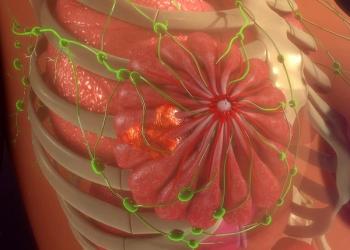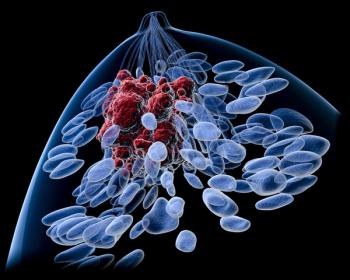
- ONCOLOGY Vol 22 No 6
- Volume 22
- Issue 6
Novel Breast Probe Reduces Repeat Breast Cancer Surgeries
A novel intraoperative breast cancer probe is showing significant promise in the reduction of repeat procedures in patients undergoing breast-conserving surgeries, according to a study presented at the ASBS meeting.
A novel intraoperative breast cancer probe is showing significant promise in the reduction of repeat procedures in patients undergoing breast-conserving surgeries, according to a study presented at the ASBS meeting. Using radiofrequency spectroscopy technology, the handheld MarginProbe (Dune Medical Devices, Caesarea, Israel) assesses margin malignancy status during an initial lumpectomy and helps avoid repeat procedures by enabling doctors to intraoperatively identify positive margins. Currently, positive tumor margins are identified through postoperative pathology results and are typically corrected with second surgeries, incurring added patient complication and expense.
The 300-patient randomized clinical trial conducted in 11 Israeli medical centers underscored the safety and clinical benefit of the MarginProbe system in the intraoperative detection of tumors at the resection margins in patients undergoing breast-conservation surgery. The study compared the performance of 35 surgeons operating on patients with and without use of the device. Use of the probe resulted in a 56% reduction in repeat lumpectomies. No statistically significant difference between the two study arms was seen in the volume of tissue removed.
More Precise Surgery
“This data is significant in demonstrating the potential of radiofrequency spectroscopy and the probe in characterization of cancer at the resection margins and in guiding surgeons towards more precise surgical interventions,” said study investigator Tanir Allweis, MD, of Hadassah Hebrew University Medical Center, Jerusalem. “The reduction of patient complications and discomfort as well as costs associated with repeat breast surgeries is of significant benefit to everyone involved in the treatment of breast disease.”
The device consists of a sterile, handheld probe and portable console. As the tip of the probe is applied to excised lumpectomy tissue, radiofrequency signals are transmitted into the tissue. After the signals are reflected back to the console, they are analyzed based on a specialized algorithm to determine the presence of malignant tissue in the measured area adjacent to the probe tip.
Articles in this issue
over 17 years ago
Professionalism and Cancer Careover 17 years ago
Martin Abeloff and the Quality-of-Life Movementover 17 years ago
Tracking 35 Years of Progress Against Breast Cancerover 17 years ago
Remembering Martin D. Abeloff, MDover 17 years ago
Psychological and Social Aspects of Breast Cancerover 17 years ago
The Importance of Communication in Treating Women With Breast CancerNewsletter
Stay up to date on recent advances in the multidisciplinary approach to cancer.

















































































